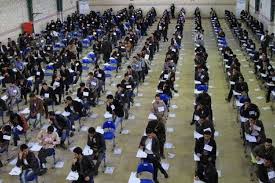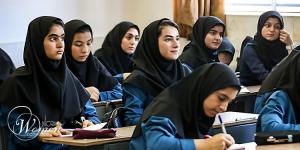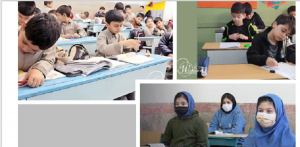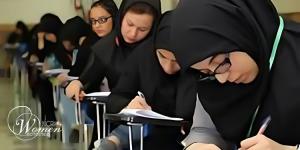The assessment of Academic Progress test results reveals a distressing reality, Iranian students rank among the “weakest” in the world. The outcomes of the PIRLS and TIMSS exams further underscore the alarming state of Iran’s education system.

The gender disparity is equally concerning, as girls’ average performance has been consistently better than boys’ in almost all countries, except in Iran where girls’ performance has declined since 2016.
One of the middle school’s science teachers in the south of Tehran said: “In my class, I asked a student to read from a book, but he didn’t know how to read.”
— NCRI
PARIS, FRANCE, August 2, 2023/EINPresswire.com/ — The National Council of Resistance of Iran-(NCRI) Foreign Affairs Committee published an article about the Educational System in Iran that the International Association for the Assessment of Academic Progress test results reveal a distressing reality – Iranian students rank among the “weakest” in the world when it comes to their educational abilities. Moreover, the outcomes of the PIRLS and TIMSS exams further underscore the alarming state of Iran’s education system.
According to the PIRLS 2021 exam results, published in mid-June 2023, Iranian students scored a dismal 413 in reading ability, placing Iran at the bottom of the table among the 57 participating countries.
The gender disparity is equally concerning, as girls’ average performance has been consistently better than boys’ in almost all countries, except in Iran where girls’ performance has declined since 2016.
What is TIMSS & PIRLS Test?
The International Association for the Assessment of Academic Progress conducts the “PIRLS” test once every five years to measure reading achievement at the fourth-grade level, along with assessing school and teacher practices worldwide. Directed by the IEA’s TIMSS & PIRLS International Study Center at Boston College in the United States, these assessments encompass approximately 400,000 students, 20,000 teachers, and 13,000 schools from 57 countries.
The TIMSS & PIRLS Center strives to monitor trends related to science and math education in the fourth and eighth grades across 64 countries. By comparing them with eight sample educational systems that meet the ranking standards, the test aims to identify the weaknesses in each country’s educational system.
For math and science, which are the primary subjects with 500 points, any score below this number indicates that a country’s education system falls below the global standard. Results – Countries’ Reading Achievement – PIRLS 2021
Declining educational standards disproportionately affect Iranian girls
Despite participating in this test since 1995, Iran has consistently failed to achieve favorable results. These outcomes highlight the shortcomings of public education in Iran, where students completing four years of education often lack adequate literacy, understanding, and text analysis skills.
With only 59% of Iranian students scoring at least 400 out of 1000, it is evident that Iran struggles to meet the set minimum standards. Moreover, the trend of average scores in the PIRLS test has shown a downward trajectory since 2011, resulting in a significant decline.
Regrettably, this decline in educational standards disproportionately affects Iranian girls. In contrast to other countries where girls outperform boys on the PIRLS test, the situation is reversed in Iran, adding to the urgency of addressing this issue. (The state-run fardayeeghtesad.com, June 8, 2023)
Examining the TIMSS data from the perspective of educational inequality further reinforces the worrisome state of Iran’s education system. Over the past twenty-five years, the country’s educational justice has deteriorated significantly, as evidenced by the test results. (The state-run stats minute.ir, August 11, 2022)
A report by the Research Center of the Iranian regime’s parliament for the academic year 2021-2022 highlights another concerning aspect: more than 911,000 students in Iran lacked access to education. Particularly, the province of Sistan and Baluchistan has the highest number of school drop-outs due to severe gender and class discrimination, restrictions, and deprivations.
Ali Agha Mohammadi, the Deputy Interior Minister, acknowledged in early March 2023 that 874,000 children and teenagers had dropped out of school, with a significant concentration in less privileged areas.
The Impact of the Social Class Gap
The characteristics of Iran’s educational system have become low efficiency and continuous decline for various reasons.
According to a report by Javanonline. ir, wrong education policies have led to a failure in the quality of education. This drop in quality is now showing itself in the results of the PIRLS 2021 exam. Iran is among the weakest in education among 60 countries in the world. (The state-run Javanonline.ir, June 7, 2023)
Hamid Rafiee, a researcher in the field of education, said in this regard: “Unfortunately, a stark gap has emerged within our educational system. While there is an increasing number of students from certain schools achieving top ranks and medals in international scientific competitions, indicating scientific growth among the elites in our country, we are simultaneously witnessing a decline in overall achievements within the broader society. This relative existence of a decline is consistently reported in studies such as TIMSS, PIRLS, and others.”
“The educational class gap is a direct consequence of the flawed policies adopted by the educational system, particularly in the formation of public schools. Regrettably, those with greater financial means have a distinct advantage in education, while individuals who are financially disadvantaged often face the difficult dilemma of dropping out of school or, at best, receiving only minimal education. Adding to the problem, human resources employment policies in deprived and less developed areas lack strength and vision. Consequently, conscripted soldiers or individuals offering their services, without any special training as teachers, are recruited to fill teaching positions.”
(The state-run Javanonline.ir, June 7, 2023)
Admitting the carelessness of the educational system in Iran, he emphasized: “Unfortunately, the authorities in our country hold a minimalistic view of education. Some of them openly state that investing in education results in a waste of resources, and this perspective has significantly harmed the country’s educational system.
Adding to the concern, in the current government, Mr. Raisi has participated in the Supreme Council of Education meetings only once, highlighting that this critical matter is not a priority for the country’s most important governing body. Therefore, we have missed numerous opportunities.” (The state-run Javanonline. ir, June 7, 2023)
Masoud Kabiri, a board member of the Academic Center for Education, Culture, and Research, said that one-third of the students in Iran do not reach the minimum level of literacy: reading and writing. He added: “One-third of fourth graders in Iran are unable to perform the four basic actions, reflecting a disastrous situation. Moreover, over the past 24 years, Iran has consistently failed to reach the world average score of 475 out of 1,000.”
Wrong policies, the reason for a weak educational system in Iran
Kabiri says, “In the math test, about 32% of fourth graders scored less than 400, and Iran ranks 32 among 39 countries in eighth-grade science, which means they are in a frail condition.”
One of the middle school’s science teachers in the south of Tehran said: “In my class, I asked a student to read from a book, but he didn’t know how to read.”
Saeed Payvandi, a sociologist of education and science at the University of Lorraine, France, also says: “When we come across a 30% illiteracy rate among students in Iran, it means that the educational system has not done anything for students who have unfavorable educational conditions.”
This sociologist considers the ineffective influences of educational methods, the financial problems of students and their families, the lack of educational hardware facilities, and the cultural gap between schools and students as the reasons for the low literacy of Iranian students.
Sara Ommat Ali, an educator, and expert, also believes that the government’s actions in the education field cause deterioration in Iran’s education system. She said: “In recent years, we have seen the education institution becoming increasingly ideological and securitized.
Resources and budgets that should be spent on teachers’ retraining and upskilling projects are spent on exerting more control over schools and injecting ideological teachings into the education process. While the lack of teachers has been one of the main challenges of the education system during these years, we have seen the employment of 25,000 teachers from the seminaries.”
She believes that by applying these policies, the government has worn out the educational system, and poor results in exams are not far from expected from a worn-out system.
Teachers, who better than any authority and institution, can see and touch the state of education quality, educational inequality, and its damage to the future of students, have been expressing the demands of the trade union in their gatherings and protests for years. Still, they have received no answers except imprisonment and attack from the security forces.
This will ruin the country’s future if the education system, as the country’s primary institution, cannot provide all Iranian students with minimum quality education, regardless of what social class, group, and family the children belong to.
The deeply rooted problems within Iran’s educational system stem from government policies that perpetuate corruption and hinder students’ progress. As long as these issues persist, Iran’s students will continue to face immense challenges in achieving their educational potential.
The security forces’ raids on schools, the arrests of students during the 2022-2023 protests, and the suspicious poisoning of thousands of schoolgirls are among recent developments that have further undermined Iran’s educational system.
Shahin Gobadi
NCRI
+33 6 61 65 32 31
email us here
![]()
Originally published at https://www.einpresswire.com/article/647530484/corrupt-educational-system-in-iran-and-its-troubling-impact-on-pirls-and-timss-test-results




